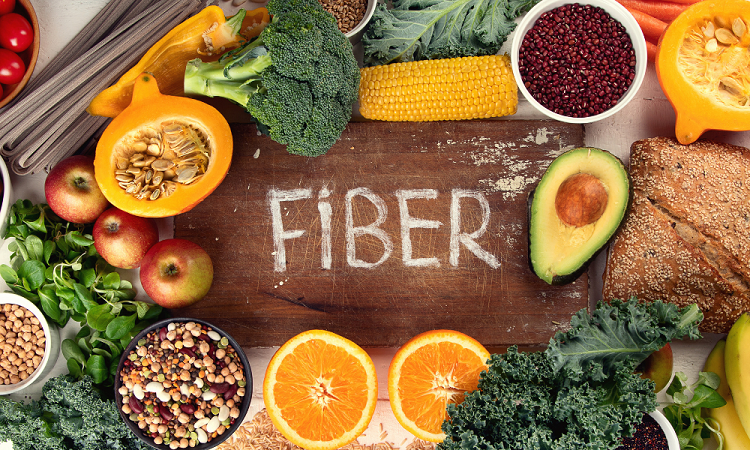
Boosting Your Health with Fiber-Rich Foods: Benefits and Top Choices: Fiber is an essential component of a healthy diet that often doesn't receive the attention it deserves. It plays a crucial role in maintaining good digestive health, managing weight, and reducing the risk of chronic diseases. Here, it explores the benefits of fiber-rich foods and provides practical tips on how to incorporate them into your daily diet.
The Benefits of Fiber:
Improved Digestive Health:
Fiber promotes regular bowel movements and prevents constipation by adding bulk to your stool. It also helps prevent diverticular disease and hemorrhoids.
Weight Management:
High-fiber foods tend to be more filling, which can help you control your appetite and reduce calorie intake. This can be beneficial for weight loss or maintenance.
Blood Sugar Control:
Soluble fiber, found in foods like oats and legumes, can help stabilize blood sugar levels by slowing down the absorption of sugar in the bloodstream. This is particularly important for individuals with diabetes.
Heart Health:
A high-fiber diet can lower cholesterol levels, reducing the risk of heart disease. It also helps maintain healthy blood pressure and reduces inflammation in the body.
Reduced Risk of Certain Cancers:
Consuming a diet rich in fiber, especially from fruits and vegetables, has been associated with a decreased risk of colon cancer.
Types of Fiber:
There are two main types of dietary fiber:
Soluble Fiber:
Found in foods like oats, barley, beans, lentils, and fruits (especially apples, citrus fruits, and berries).
Helps lower cholesterol levels and stabilize blood sugar.
Insoluble Fiber:
Found in whole grains, vegetables, and the skins of fruits.
Promotes regular bowel movements and prevents constipation.
How to Add Fiber to Your Diet:
Start Your Day with Whole Grains:
Choose whole-grain cereals, bread, and oatmeal for breakfast. Look for products with "whole grain" as the first ingredient.
Load Up on Fruits and Vegetables:
Aim to fill half your plate with fruits and vegetables at every meal. Snack on raw vegetables or fruit slices for added fiber throughout the day.
Incorporate Legumes:
Add beans, lentils, and chickpeas to soups, stews, salads, and pasta dishes. They are rich in both soluble and insoluble fiber.
Choose Whole Grain Pasta and Rice:
Opt for brown rice and whole-grain pasta instead of their refined counterparts.
Snack Wisely:
Reach for high-fiber snacks like air-popped popcorn, mixed nuts, or whole-grain crackers with hummus.
Don't Peel Your Fruits and Vegetables:
Many of the vitamins and fiber in fruits and vegetables are found in or just beneath the skin, so try to leave the skin on when appropriate.
Read Food Labels:
Check the nutrition labels when shopping for packaged foods. Look for products with higher fiber content.
Incorporating fiber-rich foods into your diet can have numerous health benefits, from improved digestion to reduced risk of chronic diseases. By making simple changes to your daily eating habits, such as choosing whole grains, adding more fruits and vegetables, and including legumes, you can easily increase your fiber intake and support your overall well-being. Remember that a balanced diet, including a variety of fiber sources, is key to reaping the full benefits of this essential nutrient.